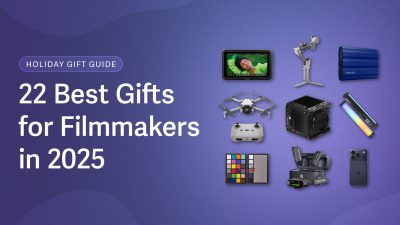Recent research suggests that, when it comes to creating viral video content, the biggest indicator of success isn’t reaching influencers. Rather, it’s reaching a wide, varied audience of ordinary folks.
A joint study by BuzzFeed and StumbleUpon noted that, “Content goes viral when it spreads beyond a particular sphere of influence and spreads across the social web, via ordinary people sharing with their friends.”
In other words, if you want your video to be seen by lots and lots of eyes, it needs to be accessible—in language, subject matter, and approach—to more than just one niche audience. Keep reading for tips on how to use this information to your advantage when planning your next viral video campaign.
Going the Distance With A Single Common Denominator
In many ways, making shareable content is like making small talk with somebody you don’t know that well.
With small talk, you can’t assume a relative stranger is going to think as you think, or like what you like. So if you want to create a nice rapport, you have to figure out what you have in common and start there. The weather. A local sports team. The fact that the bus is late. You get the picture.
Shareable video content is similar. The important difference is that it needs to be noteworthy too. A viral video starts with a common denominator a lot of people can relate to. Then, add something original to make it worth talking about.
A great example is P&G’s “Best Job” Olympic commercial, which was so widely beloved it ended up winning a commercial Emmy. Their formula? Everybody has a mother (common denominator) and the Olympics would be impossible without Olympic moms (something worth talking about).
How Influencers Can Help You (But Don’t Rely on Them)
Yes, you should aim to reach a wide variety of regular, average Joe’s and Jane’s with your video. But, we aren’t suggesting you forego targeting influencers online entirely.
A quick Twitter search of hashtags commonly used within the scope of your topic, or a short skim of a chat room popular with the type of people to whom you’re marketing, ought to produce a solid handful of people who also have something to say on the matter. More importantly, it will also turn up people who are listening to them already.
Even if the wider public is your main concern, it doesn’t hurt to do some online PR. Keep these tips in mind when reaching out to influencers:
Stay on topic
If your video is about mothers, directly appeal to people are interested in motherhood. Seek out those who have a platform to speak to people who are interested in motherhood. Send links to people who have a big audience, and who probably care themselves.
Think through your niches
If it’s a video appealing to our love for dogs AND babies, target influencers who are tapped into dog-interest communities and baby-interest communities. And, if you’re using dogs and babies to convince us to buy a car, target influencers who are tapped into car-interest communities too.
Sell your story
If you don’t have a marketing professional on staff, it’s important to know how to package a story in a way that will be interesting to an influencer. Focus on the aspects of your story that will appeal to the influencer’s audience. This helps them on their quest to remain a valuable source of information to their followers. Usually, by helping them provide value, your efforts will also appeal to them as individuals. Do your research.
Takeaways
When creating a viral video, remember to find a common single common denominator that appeals to the largest audience possible. Appealing to a large audience is more important than targeting influencers. If the content is good, they’ll find it and help spread it. That said, you don’t have to leave out influencers when promoting your video. Just make sure to stay on topic, think through your niches, and sell your story when getting in touch with them.
Questions? Comments? Please share!








